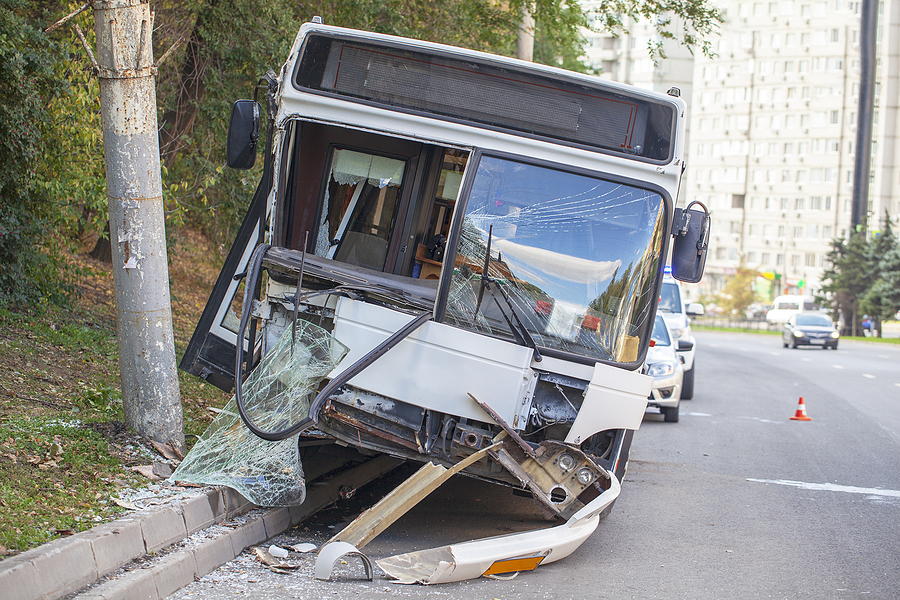Every day in the United States, millions of people use public and private buses. Although commuting via public transportation is often significantly safer than driving your own vehicle, there is no guarantee that your trip will be free of traffic collisions. Though these accidents are often grouped with large truck collisions when evaluated by traffic authorities, estimates show that bus collisions will not drop in frequency soon.
Between 2017 and 2018, bus crashes rose by one percent, with a 45% increase in fatal collisions between 2009 and 2018, according to the Federal Motor Carrier Safety Administration. If you have recently become the victim of or involved in an MTA bus accident or have lost a loved one in such an accident, you have the right to take legal action against the liable parties. However, there are numerous factors to consider when building your case, so you will need to consult the guide below before filing a claim.
Your Rights as a Bus Accident Victim
If you were injured, incurred property damage, or lost a loved one to wrongful death due to a negligent bus driving or company, you have the right to receive compensation for your losses. To exercise this right, you must be able to identify the specific losses incurred and gather the appropriate evidence to demonstrate your financial needs:
- Bodily injury. The most common physical injuries that victims sustain in bus collisions include:
- Paralysis
- Spinal cord injuries
- Traumatic brain injuries (TBIs)
- Loss of an extremity
- Whiplash
- Fractures
- Personal injury. This refers to non-physical damages you may have incurred in the accident. For example, victims often have post-traumatic stress disorder (PTSD) in the aftermath of a bus accident due to disfigurement or impairments that disrupt their normal lives. Any anxiety, depression, or other traumas you live with after the crash can be included in your compensation demands.
- Note: To prove both bodily and personal injuries, you will need to collect several types of evidence. While physical injuries can be proven with documentation from a medical examination, psychological and emotional trauma require different forms of evidence. First, family and friends can provide testimonies outlining the extent to which the accident has impacted your normal behavior. Second, you can collect bills from your psychiatrist and/or therapist to show the financial losses associated with the non-physical impacts of the crash.
- Lost wages. If your injuries were so severe that they required medical treatment that took you away from work, you have the right to be compensated for your lost hours. Save documents for every appointment or case-related event that resulted in your absence at work and keep track of your missed hours to request the appropriate amount in your claim.
- Reduced earning capacity: As you can see in the list above, injuries from bus accidents can be quite severe. If you sustained a permanent injury, such as the loss of a limb or a disability, you may have to give up your current job and transfer to a new one that can accommodate your new condition. If this describes your case, the negligent party is responsible for paying you the difference in income.
Keep in mind that you have the right to legal defense as well. Exercising this right is critical if you wish to have a successful case. Without the guidance of an experienced lawyer, you will be hard-pressed to file a substantial claim, as buses are often owned by powerful companies or municipalities. A lawyer will guide you through the litigation process following your accident, and ensure that you are not overwhelmed by the following legal details surrounding your case.
Additional Legal Information for Your Bus Accident Case
As you prepare to file your claim, you must understand that there are numerous types of buses that serve Los Angeles residents. Depending on the agency that owns the bus involved in your accident, the precise details of the litigation process may vary. For example, if you were riding a charter bus, you would likely be filing a claim against the individual driver and/or the private company. On the other hand, MTA (Metropolitan Transportation Authority) buses are owned by the city of Los Angeles, so you would be filing a claim against the Los Angeles government.
The two primary laws that distinguish these two possible cases include:
- Statute of Limitations: This law enforces a specific timeline in which victims are legally allowed to file a claim and lawsuit against the negligent driver or company who caused their crash. Although it varies across state lines, it typically extends for one full year. However, exceptions are made for accidents involving vehicles owned by local, state, or government entities. Referring to the examples above: If you were affected by a collision involving an MTA bus, you would have only six months, as opposed to two years, to file your claim. This is because the city of Los Angeles owns the MTA bus.
- Federal Tort Claims Act (FTCA): The FTCA is the primary reason why civilians have such a difficult time holding government employees and agencies legally responsible for their part in bus accidents. It’s very closely related to the sovereign immunity law, also known as “crown immunity,” which states that government entities must provide explicit permission for civilians to take legal action against them. Further, the FCTA only allows certain types of lawsuits, and specifies further that the case’s evidence must be highly detailed, and demand a “fair” amount of compensation.
Your lawyer will help navigate the stipulations surrounding your bus accident case, and do all they can to defend your rights after the accident. Even if you were involved in a crash with a city-owned bus, your lawyer will ensure that you have a strong foundation of evidence for your claim to hold the appropriate parties responsible, municipal or otherwise. They will ensure that you abide by the statute of limitations according to the case details, and defend you from any manipulative legal tactics used by the defendant’s representation. To begin your case, contact a lawyer today.
Image Source: BigStockPhoto.com (Licensed)
Related Categories: Health, Reviews, Safety








